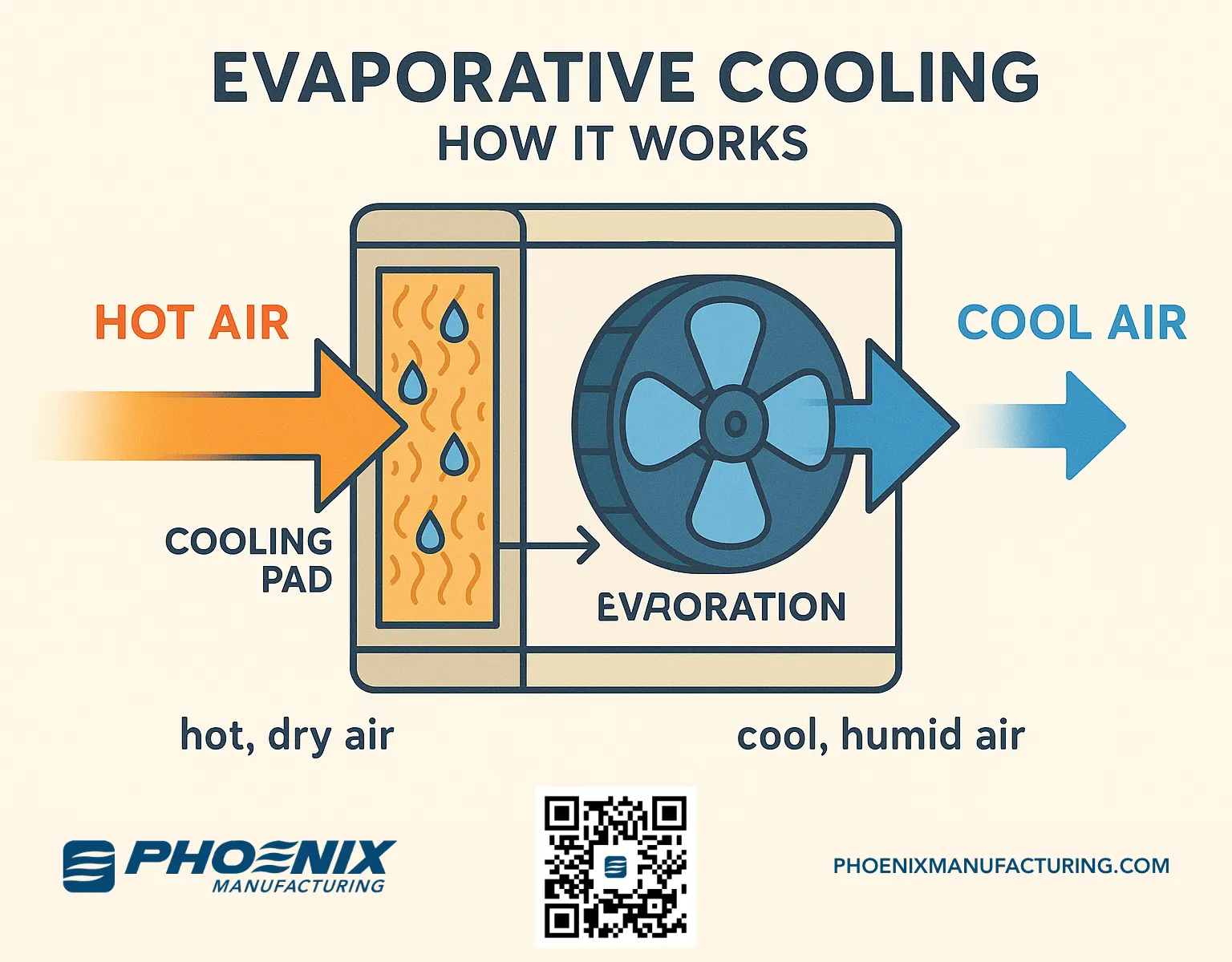
Evaporative cooling, often referred to as “swamp cooling,” is an ancient yet innovative method for lowering temperatures, offering a natural, energy-smart alternative to traditional air conditioning. Here’s a closer look at the principles that make evaporative cooling highly effective, especially for regions with hot, dry climates.
At the heart of evaporative cooling is a simple physical principle: when water evaporates, it absorbs heat from the surrounding air. This process is called enthalpy of vaporization—it takes energy (in the form of heat) to change water from liquid to vapor, cooling the air as a result.
Here’s how a typical evaporative cooler operates:
This method is similar to the natural cooling sensation you feel when stepping out of a pool into a breeze: as water evaporates from your skin, it leaves you feeling cooler.

1. Minimal Energy Use
2. Lower Operating Costs
3. Eco-Friendly and Sustainable
4. Improved Air Quality
| Feature | Evaporative Cooling | Traditional Air Conditioning |
| Cooling Mechanism | Water evaporation, natural process | Refrigerant/compressor-based |
| Typical Energy Use | 25%–35% of AC consumption | High power (compressors, fans) |
| Indoor Air Quality | Constant, filtered fresh air | Recirculated indoor air |
| Best Application | Hot, dry climates | Hot, humid or variable climates |
| Operating Cost | Significantly lower | Higher |
| Environmental Impact | Low (no refrigerants) | Higher (refrigerant emissions) |
Evaporative cooling excels in arid or semi-arid regions, where humidity is low and daytime temperatures soar. That’s why it’s popular in areas like the Southwestern United States, Australia, and the Middle East. In humid climates, however, its effectiveness diminishes since the air has limited capacity to absorb additional water vapor.
Evaporative cooling delivers genuine comfort, energy savings, and environmental benefits, all based on one of nature’s most fundamental processes. As electricity costs and the need for sustainable solutions rise, understanding the science behind evaporative cooling can help homeowners and businesses make smart, efficient choices for their cooling needs.
